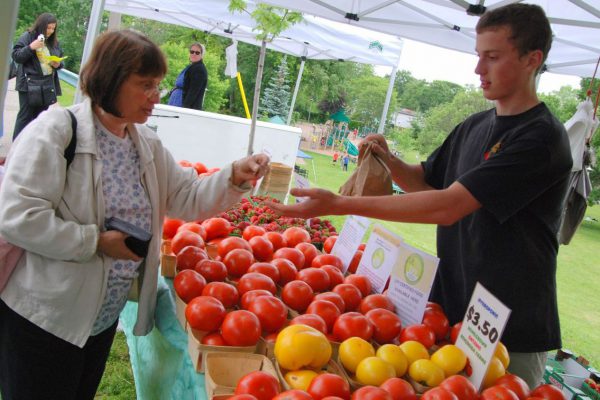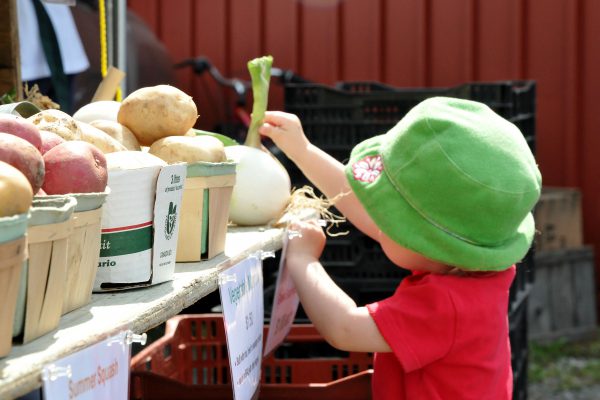Customer loyalty programs have many benefits
At the 2017 FMO Symposium, farmers’ market educator Michelle Wolf emphasized the benefits of loyalty programs at farmers’ markets.
In North America, companies spend more than $2 billion on loyalty programs every year, and statistics show the average household belongs to about 14 different rewards programs, even if they’re only active in six.
Studies show that about 80% of people who belong to loyalty programs are more likely to shop at places with loyalty programs in place and more than half said they join programs to save money or receive discounted products.

Loyalty programs have one major goal
The one goal of loyalty programs is to protect the customer relationship so that customers keep coming back.
Answering these questions will help you figure out what kind of loyalty program your market should start:
- How can we reward our best customers and keep them engaged?
- How can we give occasional customers an incentive to become regular or weekly customers?
Michelle stresses the reward needs to be meaningful to the customer – and effortless enough for your market – that there is a true feeling of getting something worthwhile on each side.
Loyal shoppers are better shoppers
A study of 1,000 small business owners found that they spend more than half their time and budget focused on existing customers. It’s a good strategy because it costs a business about 5 to 10 times more to acquire new customers than it does to sell more to an existing one. And repeat customers do spend more – about 65% more than a new shoppers does. Encouraging shopper loyalty gives a market the best bang for its buck since it nurtures and magnifies the loyal customer-market relationships that already exist.
Loyalty program best practices and watch-outs:
Loyalty cannot be won by incentives if basic customer service needs are not being met: if product availability and selection are limited, and/or if shopping experiences are not pleasant.
Loyalty is also built through effective communication, so loyalty programs require markets to get better at communicating with customers: in person at the market, in posters and handouts, and (very importantly) online via emails, Facebook pages, and your market’s website.
A program will not work without on-site staff or volunteers to administer the program all day, every day. Otherwise, you will end up delivering poor customer service. There MUST be someone to help customers sign up for the program, redeem their points, coupons, stamped cards or special offers—and answer questions about how the program works.
For some programs, having vendors participate by sharing the cost would be helpful. The fairest thing to do is to have vendors share the costs of the incentives (rewards) 50/50 with the market. That way, the vendors who benefit the most from the program pay proportionately more than the vendors who benefit the least. Be sure to assess your vendors’ role in any market-wide loyalty program you wish to implement. It’s vital to get them on board before you launch a program.
Loyalty programs can be designed so that vendors can ‘upsell’ customers in order to help them qualify for a $5 or $10 coupon or stamp, for example.
If you’re serious about setting up a loyalty program for your market, you can buy Michelle Wolfe’s e-training video & resource kit for $42 here.
If you’re just mulling it over or looking for ideas, check out these US farmers’ market sites:
http://www.northsidefm.org/loyalty-card-program.html
https://www.maplegrovefarmersmarket.com/visit/frequent-shopper-program
https://cuesa.org/markets/seasonal-shopper-rewards-card
There’s also a good overview of farmers’ market loyalty program types here.
